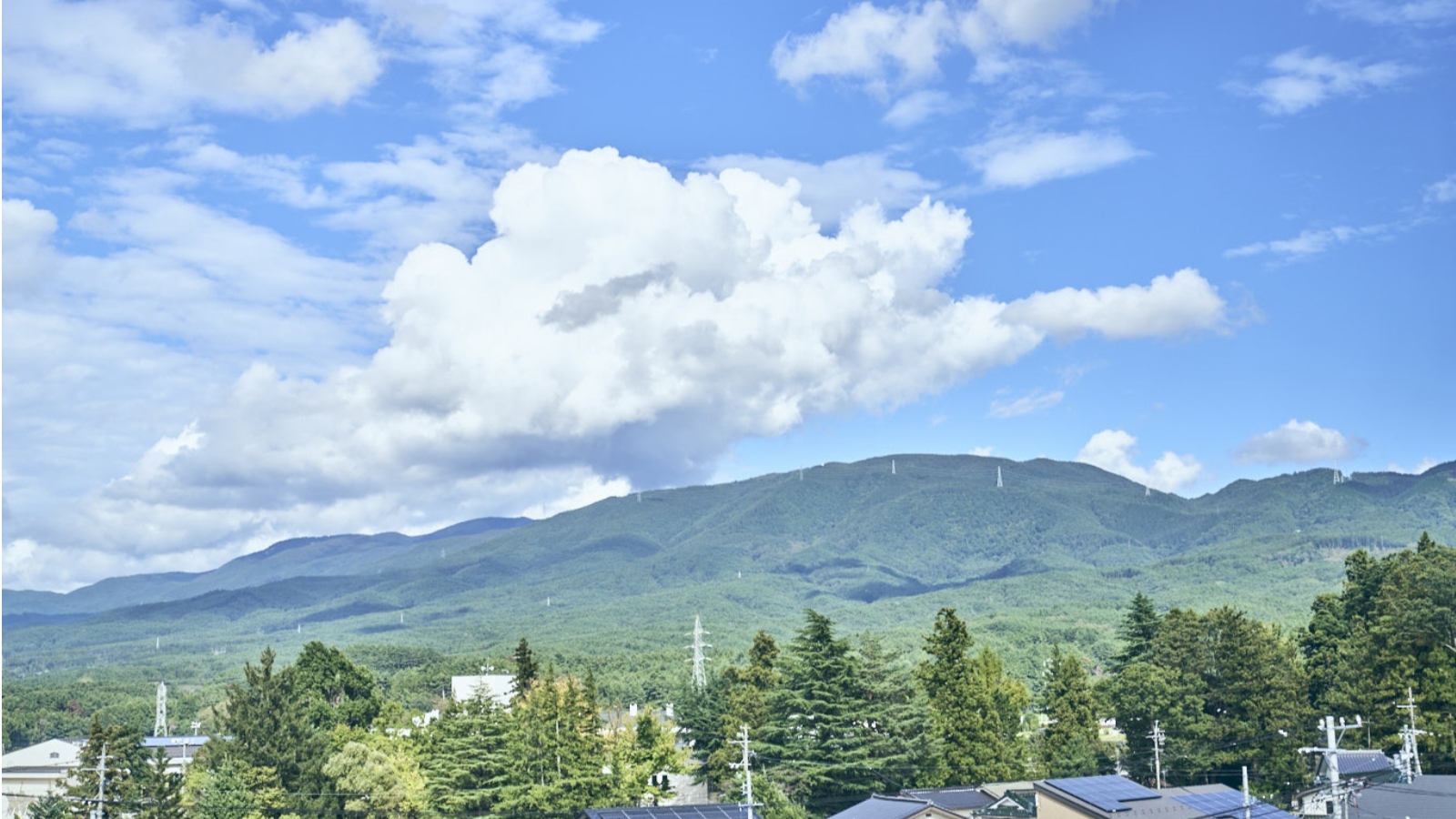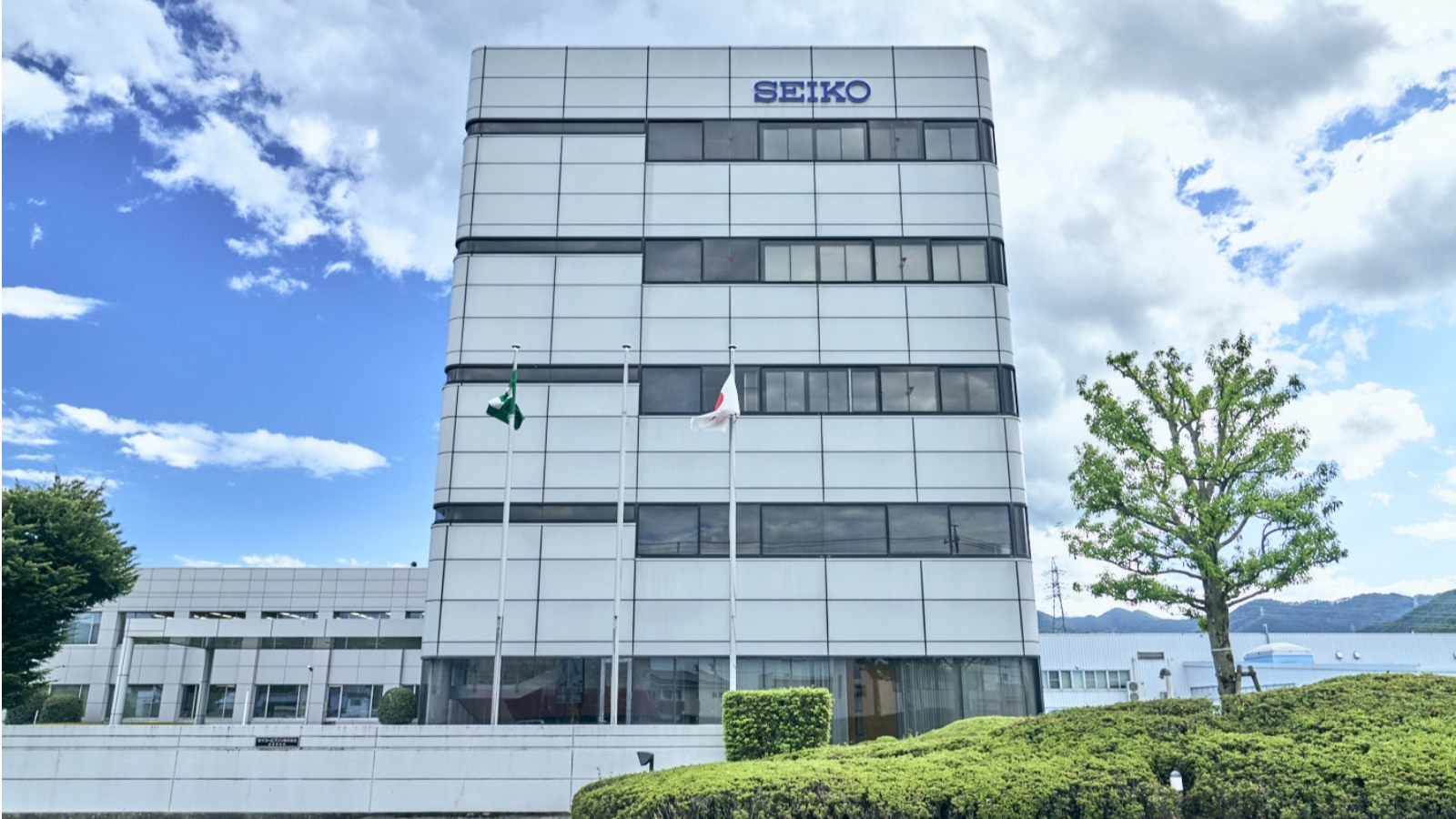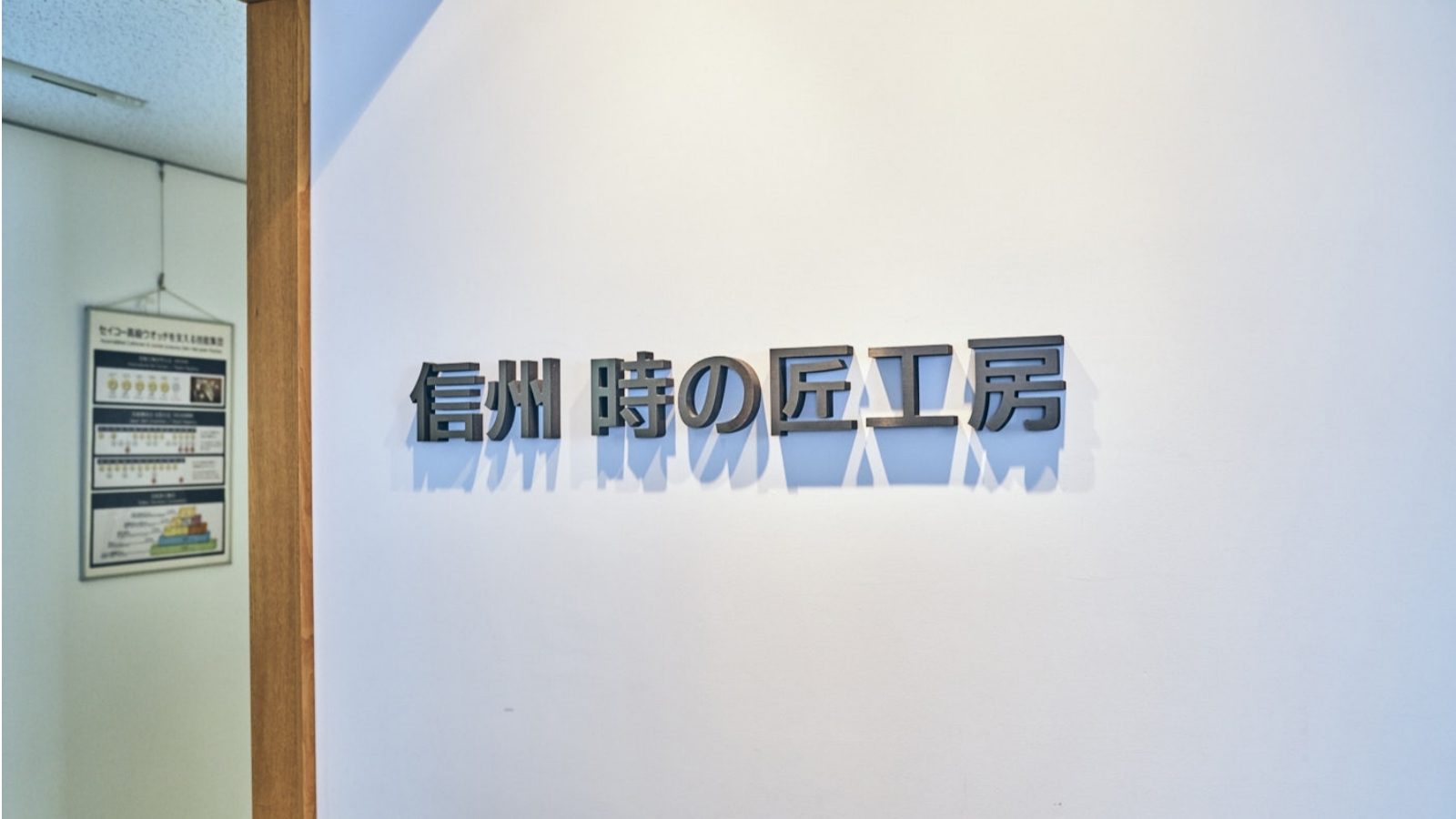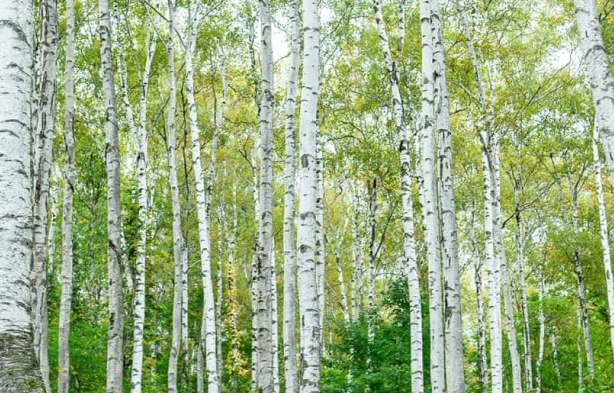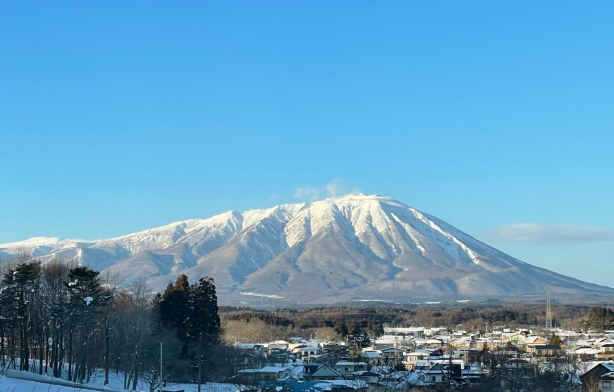Spring Drive, Born in the Lush Natural Setting of Nagano
One of the distinguishing characteristics of Grand Seiko is the presence of three distinctive movements – mechanical and quartz, as well as Spring Drive, which combines traits of the previous two. Add to this the formulation of an integrated manufacturing system for each category, extending from development through design and production in an approach that is extremely rare globally.
The manufacture of Grand Seiko Spring Drive and quartz models takes place in the Shinshu Watch Studio (within the Seiko Epson Shiojiri Plant) located in Shiojiri City in Nagano Prefecture. This facility combines a broad range of expertise, from planning and development of complex Spring Drive mechanisms, to manufacture and final inspections within the Micro Artist Studio. It likewise oversees movement assembly, adjustment, casing, and inspections by the Craftsman Studio, integration of in-house produced hands and indices, application of logo letters and fine stamping and radial patterns by the Dial Studio, along with the pressing and cutting of cases and polishing and insertion of ornamentation by the Case and Jewelry Studio.
Spring Drive is a unique and globally acclaimed movement emerging from Shiojiri. It comprises groundbreaking mechanisms in which the mainspring provides the energy, with precision control exercised through crystal oscillators and integrated circuits. Following 27 years of research and development of the original concept, the first Grand Seiko automatic winding Spring Drive model was released in 2004. Over the years, Spring Drive’s automatic movement technology has further evolved to provide five days of power reserve. Commenting on this achievement is Eiichi Hiraya, a long-term leader in the development and design of Grand Seiko Spring Drive movements.
“When considering what would be needed in next-generation Spring Drive models, first to mind was the move toward smaller and thinner dimensions. Rather than simply reducing thickness, however, there was a need to achieve greater heights for all specs. After sorting through those requirements, the target of a 120-hour (5-day) operation was determined, and work commenced on the design. To achieve a balance between space savings and a sustained power reserve, we adopted a dual-size barrel comprising one large and one small barrel, moving to optimize the tooth-shaped configuration for efficient transmission of power as it is released. Furthermore, based on technology cultivated through quartz, we teamed up with the IC Development Division in moving to develop package integrated circuits realizing greater power conservation and precision.”
On the strength of such integrated technological innovation, Mr. Hiraya explained how the progress extended beyond specs to achieve enhanced convenience.
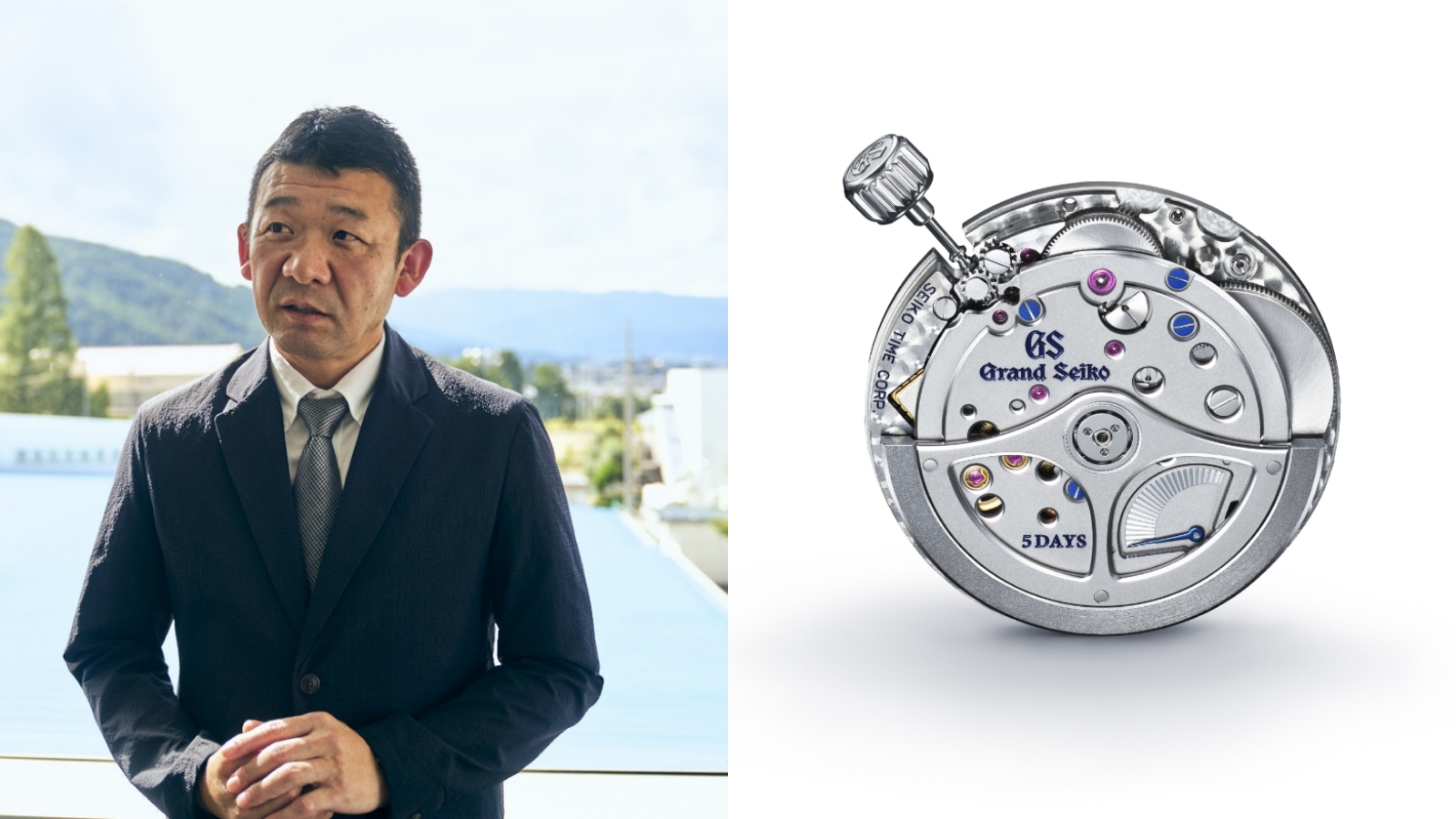
“This also applies to improvements in movement duration, as well as reassurance that precision time will continue to be displayed even after continuous use over a full month. Thanks to the thinner size, meanwhile, the sense of fit on the wrist was also vastly improved. From here on, I believe that we will face even stiffer demands to enhance aspects appealing to user sensitivities. One distinguishing characteristic of Spring Drive lies in the smooth flow of the seconds hand. Rather than ‘keeping’ the hours and minutes as such, our preferred concept is for the expression of a smooth ‘flow’ of time. More specifically, we are interested in achieving detailed perceptions of rapid and slow flows of time and feel confident that such sensations will be expressed in these wristwatches.”
Evolution in such emotional dimensions was also directed toward movement design. Emerging as a key motif in this quest was the beautiful natural setting of Shinshu.
“The Okuhodaka mountain range is visible from our studio. At the onset of winter, layers of frost steadily descend from these mountain peaks to visibly coat Takabocchi Highland in the surrounding woodlands. We thought of expressing the natural phenomenon of white hoarfrost settling on this landscape, instilling the surface with a handsome matte finish. For the diamond cut, meanwhile, the aim was to express the beauty of sparkling starry skies within the chilliness and hushed silence of Shiojiri in the Shinshu area.”
Mr. Hiraya relates how they contemplated the changing natural environment against the backdrop of the coming and going of the seasons, generating sensations of cherishing the various aspects of Shinshu on the part of those working in the studio. This, he notes, inspired efforts to further enhance Spring Drive, also ensuring enhanced beauty in the creations.
Unique Human Resource Development at Shinshu Watch Studio, Passing Skills to the Next Generation
As an integrated in-house manufacturer, the Shinshu Watch Studio has amassed skills that span the full sphere of watch production. Supporting the strength of this is its human resource development. The focus of this is an original system known as the “Craftsmanship School,” conceived to instill and carry on advanced technology and skills. To find out more, we talked with Mr. Ikukiyo Komatsu, who oversees craftsmanship through the studio’s Technology and Skills Cultivation Group.
“When new employees join the company, we assess their aptitude for handling jigs and tools, the time needed for moving parts, and other key areas. We then meet with those judged appropriate for assembly work, arranging for them to receive overall basic training in watches for about two years. During this time they also undertake the challenge of qualifying for watch repair work in skills competitions, and upon attaining the needed expertise are assigned to the Watch Studio.”
The nationwide skills tournament features competition at the demanding skill levels of Class 1 and above. Mr. Komatsu notes that attaining those skills within the required period and then rising to the challenges instills keen motivation for achieving personal growth. He has also been personally honored as a “Contemporary Master Craftsman” and received the Medal with Yellow Ribbon, which is awarded by the Japanese government, while providing leadership in conveying knowledge, skills, and know-how cultivated for over 40 years on the job to members of the younger generation.
At the Craftsmanship School studio, participants concentrated on different work tasks. They were all young, with a relaxed atmosphere in the air as if taking part in school club activities. Despite this, however, posted on the walls was a detailed mention of the goals to be achieved by each participant in accordance with schedules. Thus, it was clear that they were engaged in tough training routines.
“Upon entering the school, participants do not engage in production for two years. Rather, they undergo training in the assembly, adjustment, and repair of all types of watch movements, spanning mechanical, quartz, and Spring Drive. This is indeed a club-like activity approach, with subsequent selections based on the skills they perfect. This is also work, however, and all of the trainees certainly sense appropriate levels of pressure. After completing this program, they attain all-around skills and knowledge, instilling in them the awareness to become the core of the studio going forward.”
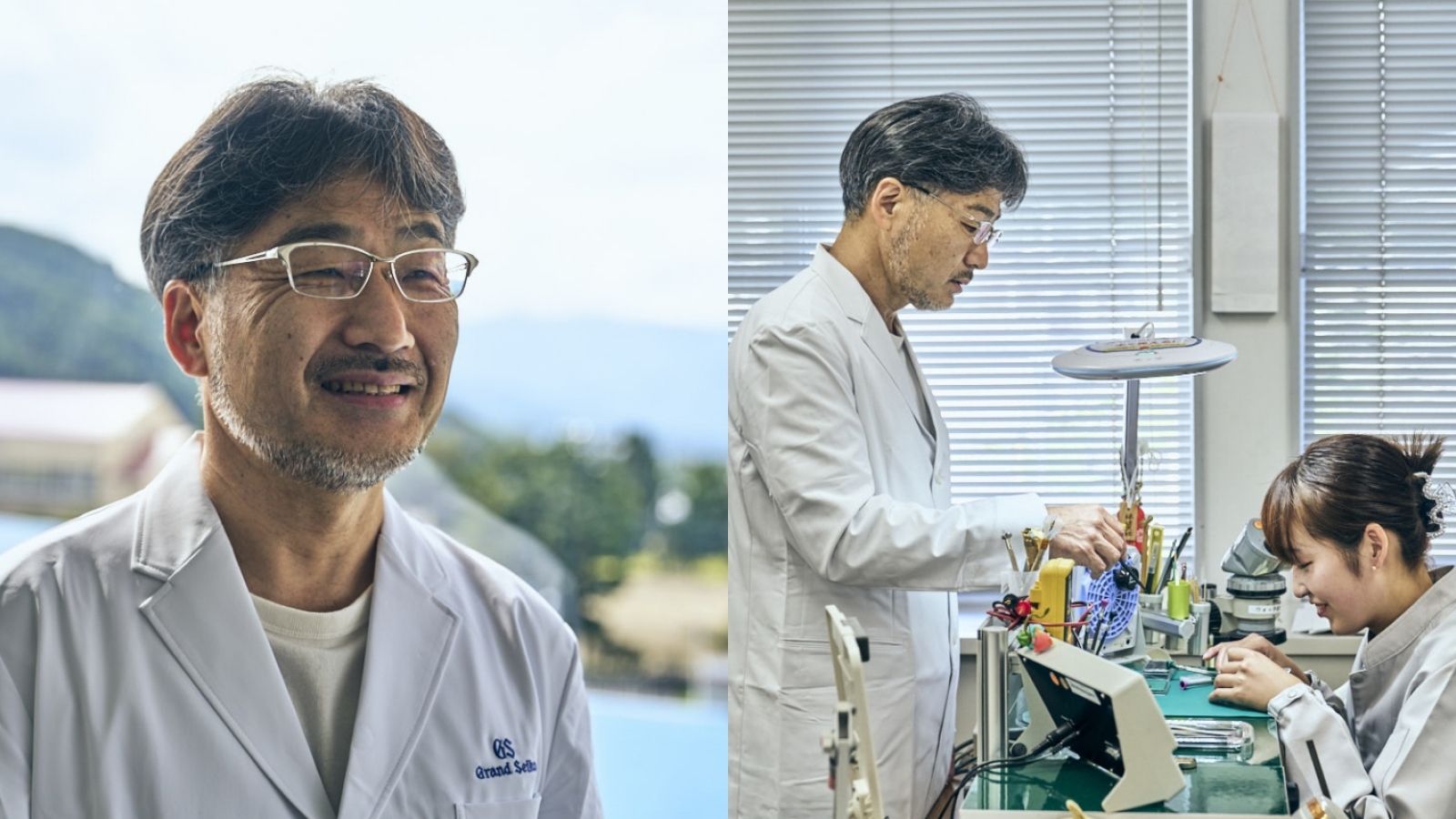
Such advanced technology, passed on and cultivated in this way, is also indispensable in Spring Drive manufacture.
“In movement assembly as well, including the gear wheels known as the glide wheel attached with magnets distinctive to Spring Drive, it is a struggle to simultaneously attach the numerous wheel shifts to the gear train. In this sense, there is no difference from mechanical models in terms of quickly and accurately attaching them without scratching the beautifully polished parts. Concerning particularly delicately finished components, scars can result from gripping or rubbing with slightly excessive strength, even when using fiber tweezers. In short, it is not sufficient to simply assemble the parts, with efforts needed to pinpoint the areas to be worked on, then put the parts together by reducing the number of times contact is made to the greatest degree possible. This is a challenge for technicians, with a demand for particularly high skills.”
Mr. Komatsu smiles, however, when he describes the exquisite results when devoting such advanced skills to this handcrafting process.
“Upon pausing the rigorous focus on this work in the studio, I often feel refreshed when the outside scenery comes into view. Shiojiri is encircled by the mountains in the vicinity, lying in an inland location where it is cold in winter and shut off from the surrounding area. It is said that training in such an environment cultivates patience and perseverance. This is a region truly suitable for the precision assembly of a steady stream of luxury watches and may very well contribute to nurturing the temperament needed for that work.”
Grand Seiko Inspires New Initiatives to Preserve White Birch Forests
Sakuho Town lies about 120 kilometers east of Shiojiri, just across Mt. Tateshina in the Kita Yatsugatake mountain range. The surrounding area is blessed with Shirakoma Pond (located over 2,100 meters above sea level and qualifying as Japan’s largest natural lake), precious moss forests untouched by human hands, the vast Yachiho Highland, and other rich natural resources. Another feature is a white birch forest with 500,000 trees stretching across some 200 hectares, projecting a truly graceful stature.
The Grand Seiko Spring Drive lineup includes models mounted with dials in the motif of the natural features of Nagano. One of these contains the image of the white birch forest of Yachiho Highland, which has also inspired a new creative undertaking – the “Forest Parents Agreement.”
In the spring of 2024, Seiko Watch Corporation signed an agreement with Sakuho Town calling for the planting of white birches and other forest preservation activities in Yachiho Highland. Meanwhile, under the “Forest CO2 Absorption Evaluation Certification System” of Nagano Prefecture – judged by the amount of CO2 absorbed on the progress made in forest maintenance – from fiscal 2024 one portion of the volume of the carbon dioxide emitted by Grand Seiko Boutiques in Japan will be treated as carbon offsets. Yuichi Daikuhara of the Policy Promotion Section of the General Policy Division of the Sakuho Town Office reflects on the process that paved the way to this signing.
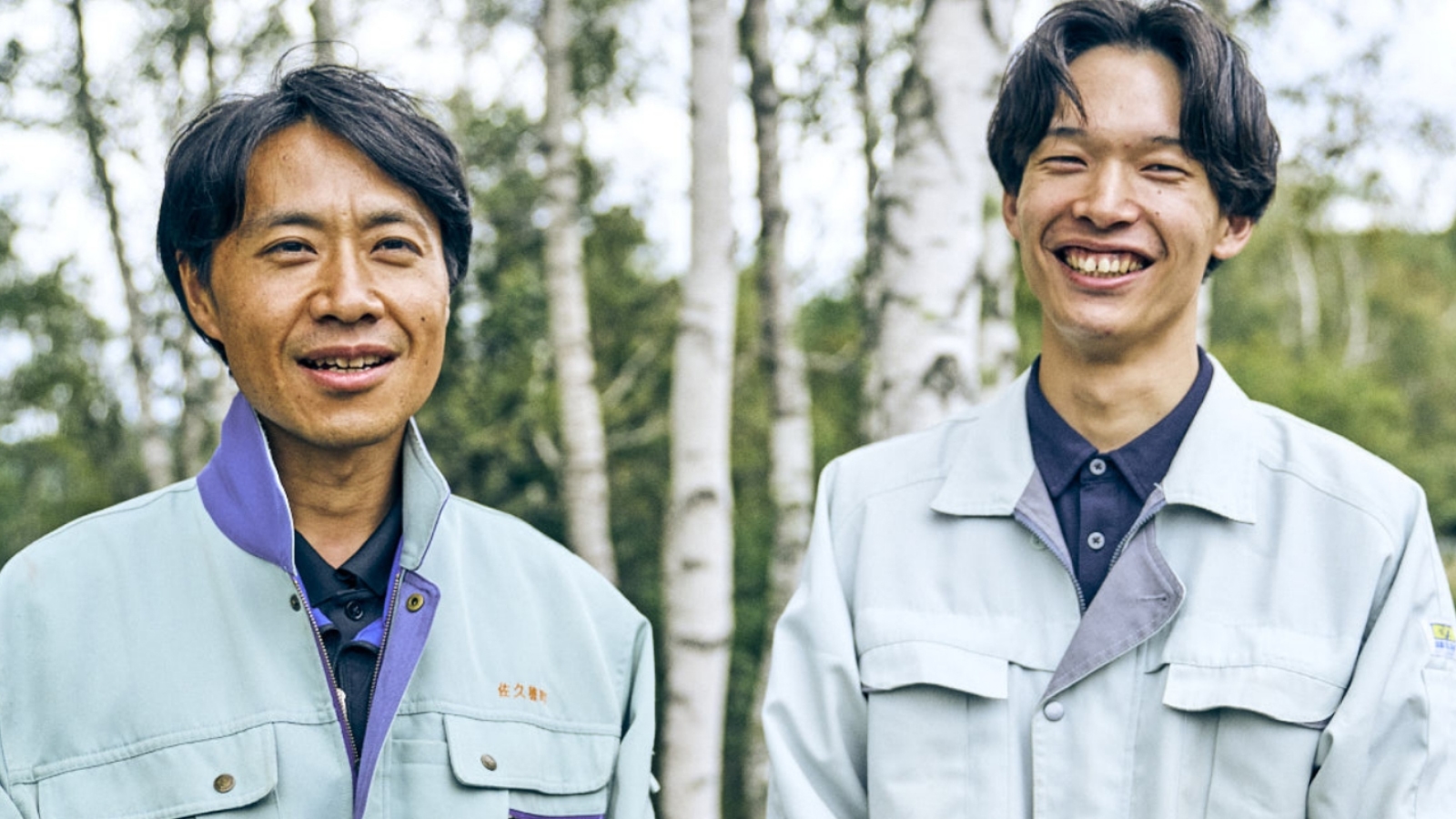
Notes Mr. Daikuhara: “At first, I was unaware that there was a watch for which the white birches of Yachiho Highland had emerged as the motif. The moment I first set eyes on that model, I was so impressed that I immediately contacted Seiko, which eventually led to the signing of the Forest Parents Agreement. In essence, this is a system executed through the support of Nagano Prefecture, in which companies and groups interested in contributing to society join with regions keen on advancing forest maintenance to promote forest maintenance and activities. The fruits to date include cosmetics utilizing white birch and other product planning, which is a first-time undertaking for us as well. With Grand Seiko ranking as a premier global watch brand, at first it was difficult to envision what we could accomplish together.”
This move also appears to have been motivated by the powerful desire to appeal for white birch trees as a local tourism resource. In the background, however, was the issue of maintenance and management targeting the future. Explains Yuichiro Asari of the Sakuho Town Forestry Office under the Industrial Promotion Division:
“The majority of the current trees are about 65 years old. As they continue to age, it is increasingly impossible for saplings to take root and grow deep in the forest. We are currently advancing maintenance activities aimed at retaining only the mother trees, while promoting the scattering of seeds and also weeding and planting of small trees to enable sunlight to penetrate the areas.”
Yuichiro Asari notes that such efforts are rooted in the awareness of the importance of taking care of the natural resources around them.
“There is a particularly strong desire to make the transition to the next era. At Sakuho Municipal Elementary School, for example, annual tree-planting activities are organized as one phase of the career education program. This involves planting about 100 white birches every year. Next year marks the 10th anniversary of this initiative, when the combined total will reach about 1,000 trees. The schedule calls for carrying on this activity for many years to come. We hope that such efforts will also help generate greater local esteem, with the participating children wishing to remain in Sakuho in the future and otherwise feeling attachment and shared respect for the community.”

On the occasion of the signing of this agreement, “Seiko Exciting Clock Schools” were held at Sakuho Elementary School. This program was organized as a so-called “clock school” by Seiko to enable children and other young people destined to shoulder the burdens of the next generation to take part in programs stressing the importance of time while nurturing greater aptitude in thinking on their own. More specifically, this involved the experiences of watch craftsmen, experimenting with sundials, and other learning activities.
According to Yuichi Daikuhara: “Within our town, we were extremely grateful for the opportunity to join forces in this way, while the children were also delighted by the clock school experience. When it comes to planting, with an activity conducted in nature, considerable time is required for the results to emerge. Through a link with watches, which track the passage of time, I feel that this effort has proved highly meaningful.”
Under the agreement, the schedule is to plant 3,000 trees on one hectare of land each year. Participating in the kickoff to help out with the planting was Munehisa Shibasaki, General Manager of the Grand Seiko Global Head Office, which organized this undertaking under the SDGs Promotion Office. GM Shibasaki relates his feelings upon directly planting white birch saplings:
“The Grand Seiko brand philosophy is based on the Japanese aesthetic sense, which finds beauty in the passage of time and the changing of the seasons. The town of Sakuho preserves and manages a vast forest of exquisite white birch trees. We share a common awareness and desire to protect Japan’s precious nature for today and for future generations. Going into the mountains and planting saplings with the people of Sakuho has only served to strengthen this desire.”
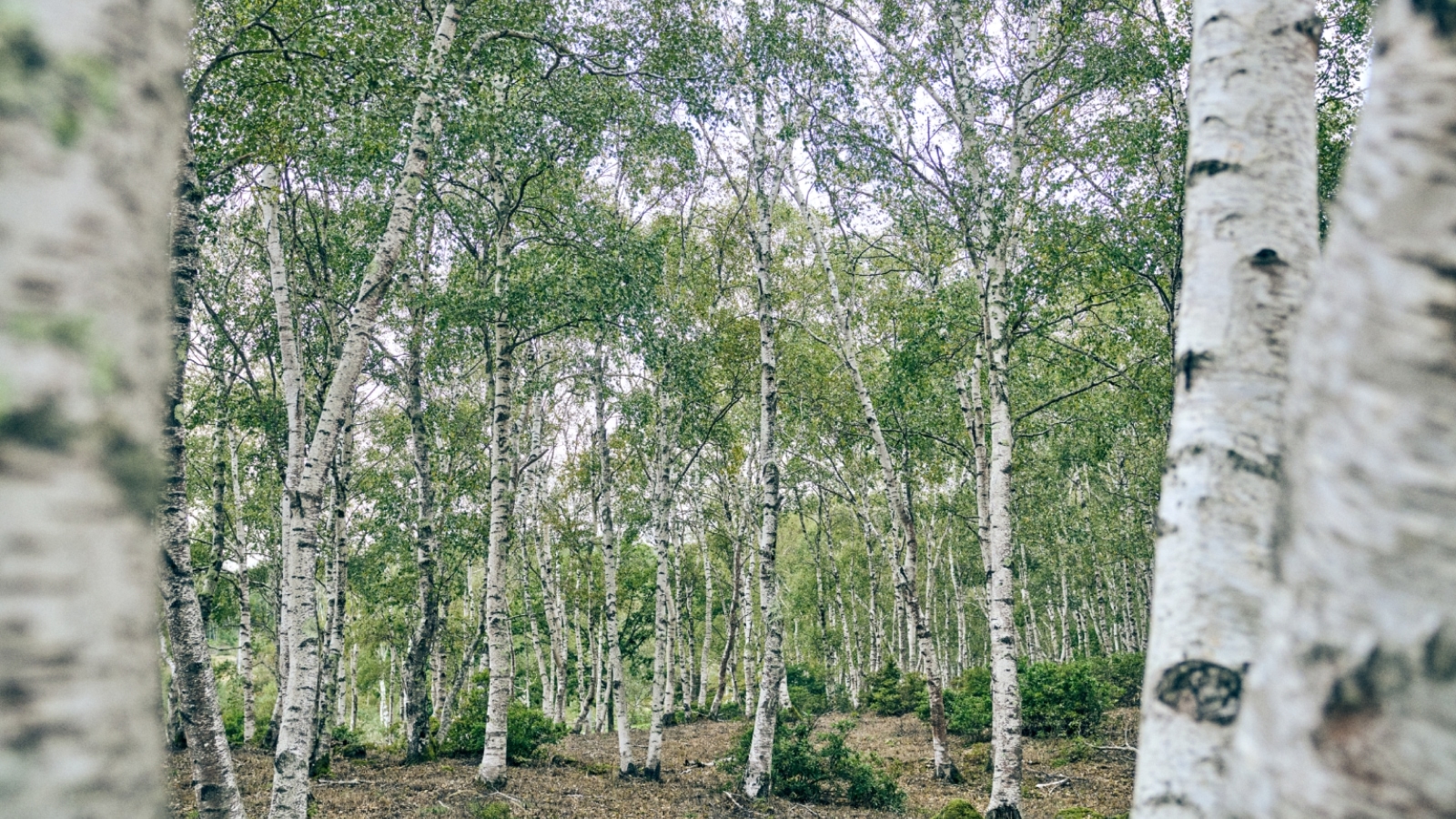
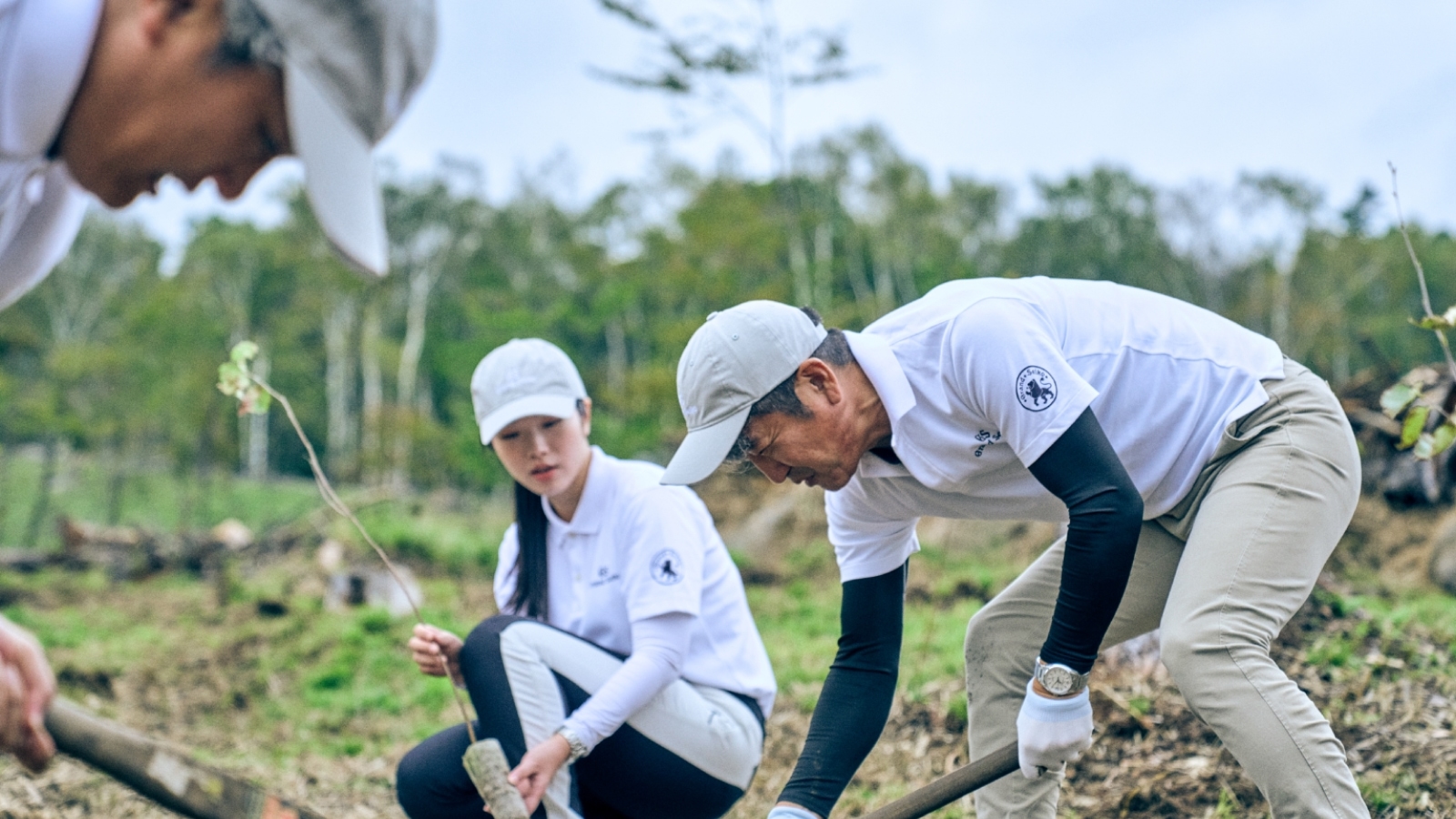
- Text: Mitsuru Shibata
- Photo: Tetsuya Niikura






